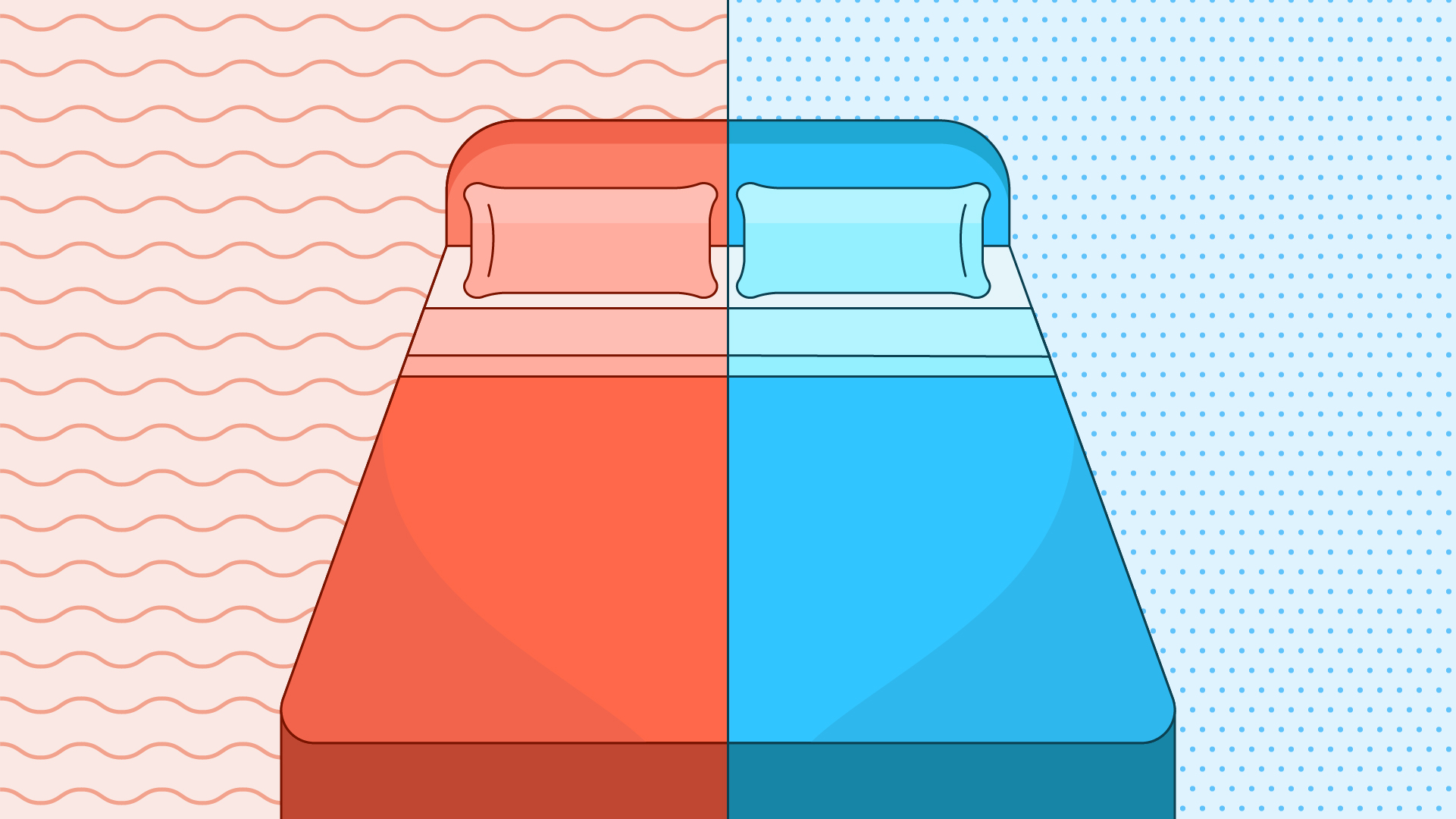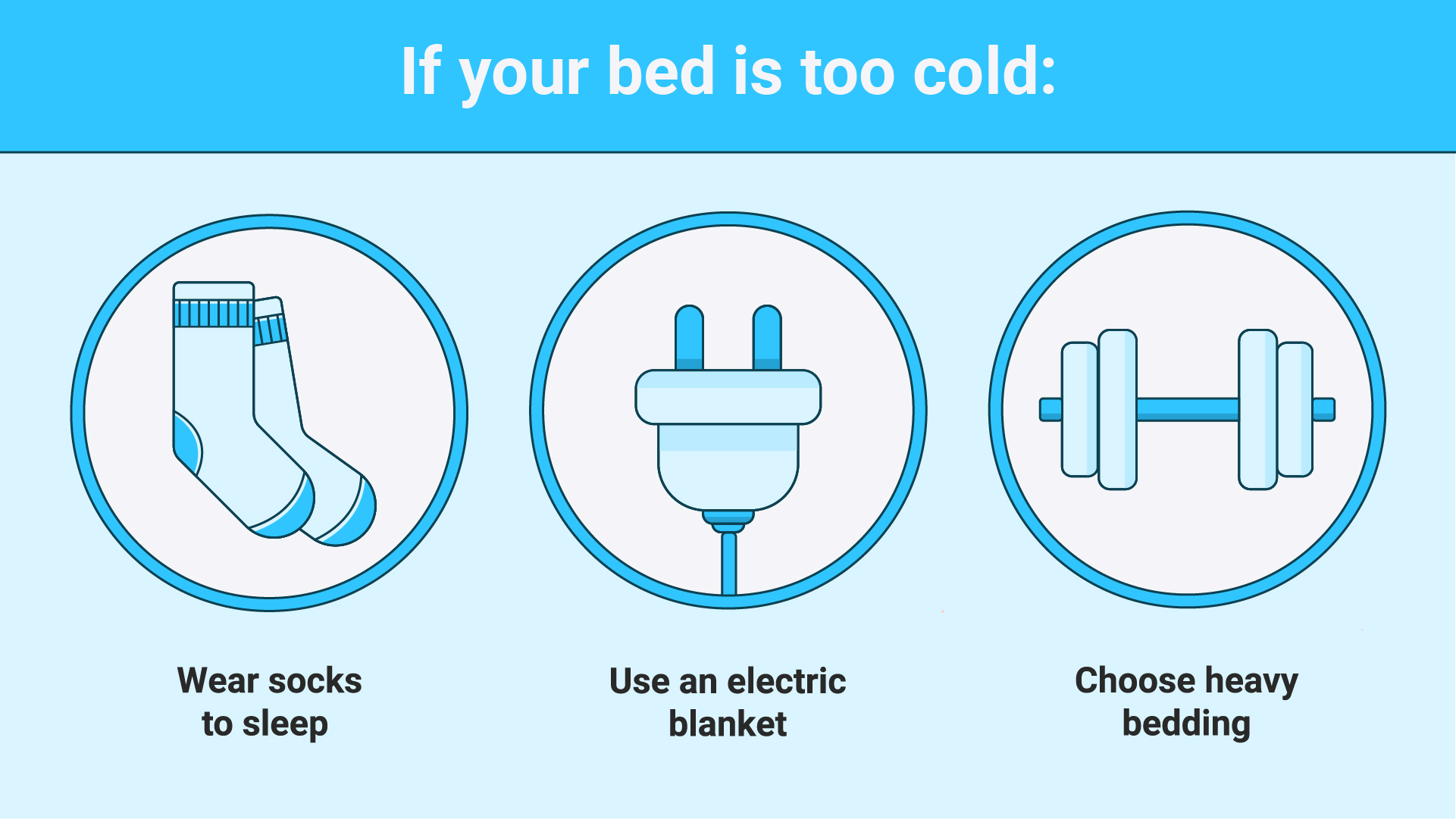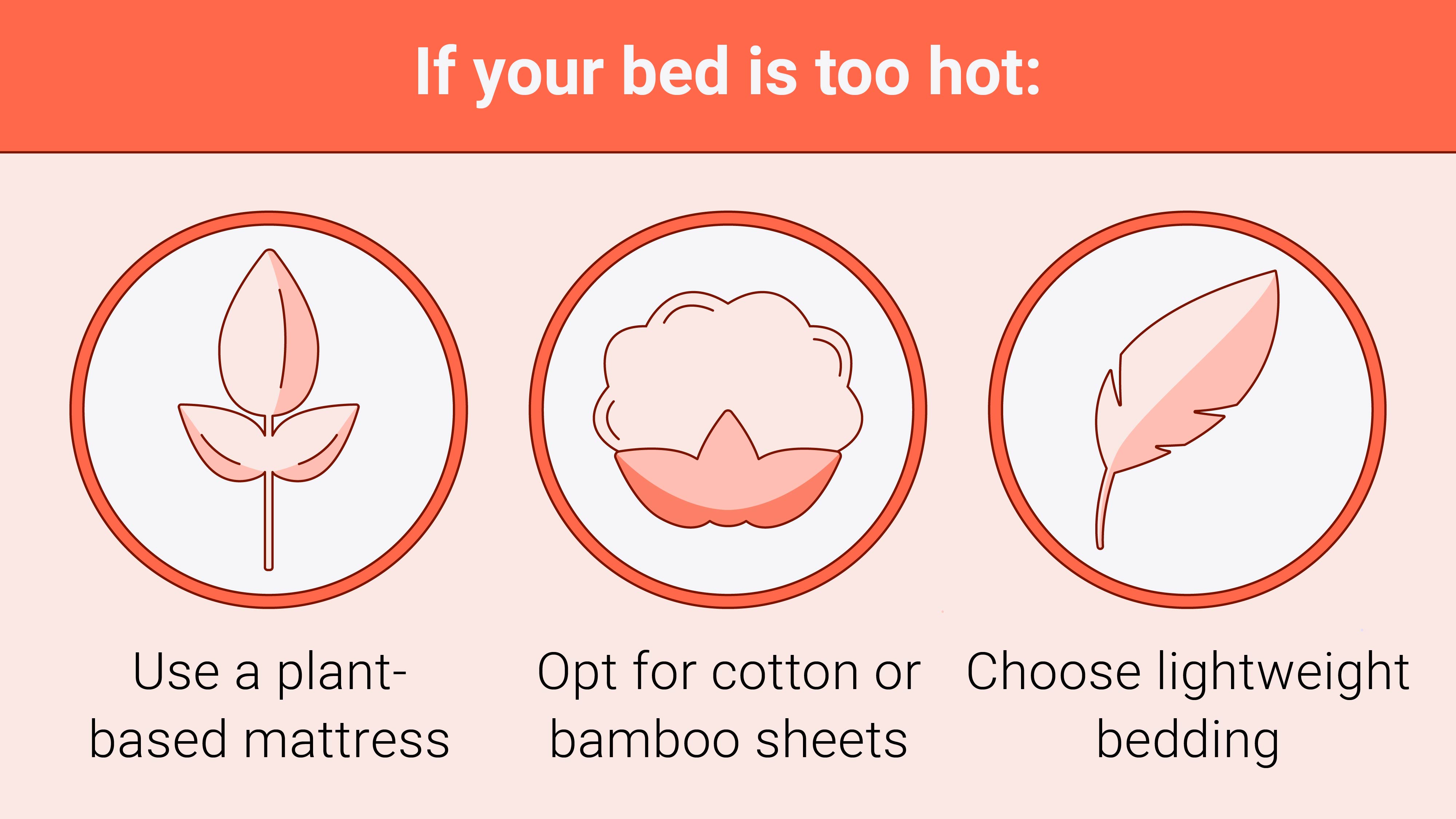
Bed Too Hot or Too Cold? Find a Solution
- Understanding the various factors that contribute to sleep temperature, including room temperature, mattress composition, and individual preferences, can help individuals identify the root causes of their discomfort and make informed decisions when choosing bedding and sleep solutions.
- Different mattress types, such as latex, memory foam, innerspring, and waterbeds, possess varying levels of heat retention and breathability, which can significantly impact how hot or cold individuals feel during sleep.
- Electric blankets, heated mattress pads, temperature-balancing fabrics, and mattress toppers, can help regulate body temperature and create a more comfortable sleep environment, especially for individuals who experience fluctuating temperature preferences or couples with differing temperature needs.
Trying to get a good night’s rest in a bed that is too hot or too cold can be extremely difficult. Does your mattress have you tossing and turning as a result of an uncomfortable temperature? Don’t mess with your sleep. There are some things you can do to keep your cool….or lose it, whichever you fancy.
Sleeping too cold at night can contribute to arthritis and fibromyalgia symptoms as well as making it hard to sleep well. But, uncomfortable sweating, tossing and turning and disrupted sleep can all be caused by a bed that is too hot as well. No one wants to try to sleep in either situation.
Keeping your bedroom and mattress at an optimal sleep temperature and finding a workable solution, especially for partners who may have different temperature preferences, can seem difficult but is not impossible. In this article, we’ll look at ways to warm up and cool down at night, or do both.
Why Do You Sleep Hot or Cold?
Numerous factors can combine to make a bed feel too hot or cold to sleep comfortably. Some that come to mind include room temperature, mattress composition, bedding, as well as individual metabolisms and preferences. A mattress’s breathability and heat retaining properties can affect how hot you feel. Each mattress will vary in breathability, some more than others.
Because temperature is largely dependent upon individual preference and how hot or cool your body naturally feels, couples can have fairly different ideas of what feels good. One person may prefer hot while the other cold. This obviously can be a problem in one bed!
Another thing to consider is that we aren’t always the same body temperature. Our bodies experience temperature fluctuations throughout the night, so what feels good at 10 PM may feel too cold at 12 AM or too warm in the morning!
Keep reading to see how different mattresses and fabrics can factor in to your sleep temperature.
How Bed Composition Influences Sleep Temperatures
Aside from personal factors and room temperature, mattresses play perhaps the biggest role in how cool or warm you will ultimately feel. Each bed type has different materials and properties, and if temperature is a concern for you, it can be helpful to know the differences when choosing a new mattress.
Percentages in our comparisons are from independent review sites like SleepLikeTheDead.com.
Latex Mattresses
- About 7% of latex mattress owners report sleeping too hot.
Latex mattresses have a pretty low rate of heat complaints, but can vary considerably depending on material type and bed composition. Beds with natural latex may sleep cooler, while beds with synthetic latex can feel warmer, and those with thick layers of regular foam on top of the latex may sleep warmest. Latex mattresses with pinholes throughout also perform better on breathability, as can beds with breathable covers made of cotton or wool. Overall owner satisfaction ratings stand at 80% with latex mattresses.
Memory Foam Mattresses
- About 9% of memory foam mattress owners report sleeping too hot.
Overall, memory foam beds have a fairly high rate of heat complaints compared to springs and other non-foam mattress types, but significant differences are present across different brands and types of memory foam. For traditional temperature-sensitive memory foam, complaint rates tend to be around 8-12%, with higher density beds sleeping hotter.
Gel infused memory foam feels cooler initially, and these mattresses tend to have heat complaint rates of about 6-8% (with models that have gel close to surface feeling coolest). Plant-based memory foam can sleep up to 25% cooler than other types according to some studies, and plant based mattresses have lower heat complaint rates from 2-6%. As a whole, memory foam mattresses have an owner satisfaction rating of about 81%.
Shopping for a new mattress? Read our guide on the best mattresses in a box
Innerspring or Coil Mattresses
- Up to 10% of innerspring owners report sleeping too hot, depending on type.
Spring mattresses have a core made of metal coils, topped with layers of foam and fiber. Some types of spring mattresses rate as low as 5%, but others are more likely to sleep hot, specifically those with thick comfort layers and those with thick memory foam layers, of which 10% of reviewers report a heat issue. Overall owner satisfaction is around 63% with coil mattresses.
Waterbed Mattresses
- Waterbed mattress owners are more likely to report sleeping cold than hot.
Since water adapts to room temperature and absorbs body heat, very few waterbed mattress owners have problems sleeping too hot. Usually, the more common issue is feeling too cold, which can be remedied with a waterbed heater. Then you can set the temperature.
Sleep Temperature Solutions
Finding solutions that will help you and your partner sleep at the ideal temperature can help minimize aches and pains while improving your quality of rest. Specialists and studies have estimated that the ideal range for good sleep is somewhere between 60-72 degrees, though as we said, this can vary from person to person. If you can’t get the mattress for your needs, use some of the following remedies to balancing your temperature at night
If your bed is too cold at night:

- Electric blankets help keep covers toasty and warm in the winter, and can help warm up your mattress. Electric blankets are not recommended for memory foam, as many react to heat.
- Heated mattress pads can help warm your body and the mattress surface.
- Use a higher weight blanket that offers strong insulation.
- Find what to wear in 70 degree weather, buy socks and keep your hands under the blankets, as your feet and hands are most sensitive to temperature.
- Use a waterbed heater with water mattresses to reach a more comfortable temperature.
- Use a memory foam topper to provide a little warmth on water beds that feel too cool.
If your bed is too hot at night:

- 100% cotton or bamboo sheets are an ideal choice for hot summer nights, as they excel at breathability and moisture wicking.
- Use lightweight covers on your bed made of natural, breathable fibers (as opposed to polyester and other synthetics which can trap heat).
- Choose a mattress type known to sleep cooler, such as an innerspring without foam padding, plant-based memory foam mattresses, or waterbeds.
- If you’re not ready to looking into buying a new mattress, a cooling mattress topper can establish a pleasantly chilled surface.
- Uncover part of your body, as your blood circulates it will cool the rest of your body.
If your preference fluctuates:
- Natural wool mattress pads, covers and toppers can help keep you cool in the summer while wicking away moisture, and can also help keep you warm during winter.
- Natural silk also excels at balancing temperatures and wicking moisture.
- You can also use a couple layers of bedding, like a thicker top cover and lighter blanket, so that if you get too warm you can just peel the thicker layer back without having to remake the whole bed.
If you and your partner like different temperatures:
- There are products that heat and cool sleep surfaces. They can be an ideal solution for couples that have different ideas of comfort, as dual models allow each person to choose different temperature settings.
- You can use different types of comforters to suit your preferences. The hot sleeper can opt for a lighter-weight blanket while the cold sleeper can use a heavier one.
- Using temperature balancing and moisture-wicking fabrics like wool and bamboo for mattress covers and sheets can help keep you both happy.
If you are too cold or too hot at night, it can be frustrating and difficult to fall asleep, and it can also affect how well you sleep throughout the night. One of the best ways to stay comfortable is to be conscious of how different materials interact with body heat when choosing mattresses and bedding. Generally, natural fibers prove more breathable which can help keep you cooler, and dense foams tend to be better at insulating and retaining body heat.
Read our take on why mattress reviews are essential to the bed buying process
When trying to find a solution, consider how how you sleep, your natural body temperature, your partner’s preferences, your mattress and your bedding. The answer could be as simple as changing your sheets, adding a mattress cover, or opting for two covers, or you could upgrade to a bed that is a better fit.
Hopefully you’ve found a couple helpful solutions for improving a too cold or too hot mattress, and feel free leave your own bed tips in the comments.
